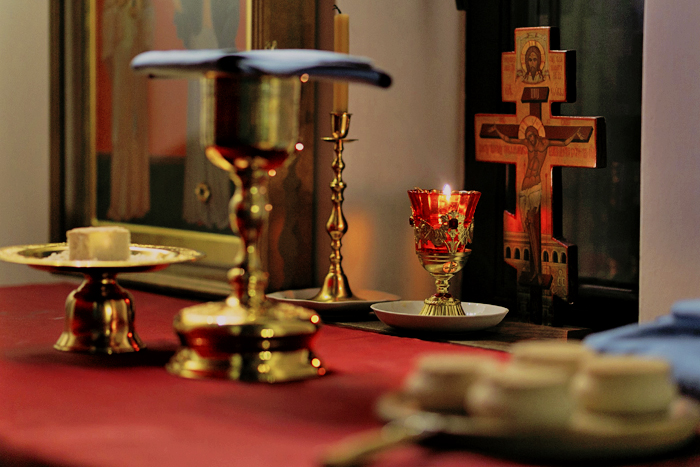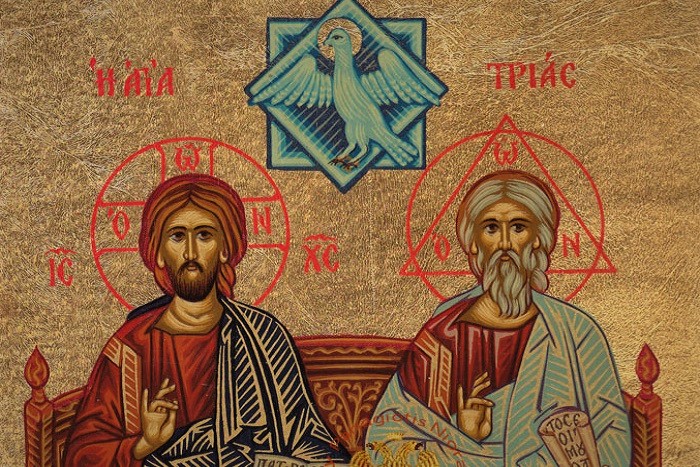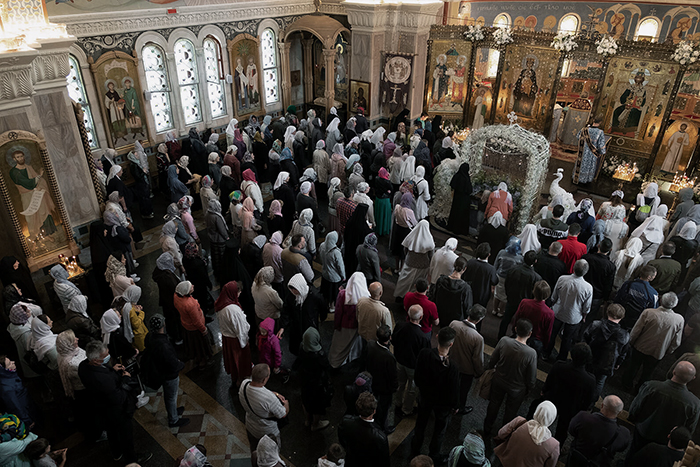
An Orthodox Christian is certainly well acquainted with the preparatory prayers for the Holy Communion. This prayer rule is important and highly recommended before partaking of the Bloodless Sacrifice, so that we may become aware, as far as possible, of all the greatness and holiness of the Liturgy, as well as of our unworthiness in the light of such a fearsome Sacrament. When did this prayer rule appear and where does the tradition of such prayerful preparation for the Communion come from?
The Conversion of the Empire
Since the conversion of the Roman Empire to Christianity, worship services moved from private homes and small churches to basilicas, so that all Christians could fit in the building and participate in the Liturgy. This affected the development of the order of the divine service as well as the time needed to prepare the sufficient amount of Holy Gifts. In addition, the Communion itself began to take up more time, which often led to the believers in the church becoming restless. The ancient biography of St. Thecla describes “a two-way congestion during the [Communion] of the Great Mysteries, when some people were just approaching, others were already leaving, others were coming in again, and others were going out again, and all of them were shouting, pushing, arguing, clinging to each other and not letting anyone take their place – all of this, of course, in order to be the first to partake of the Holy Sacrament” (The Life and Wonders of St. Thecla. Miracle 33, 2.) The Church faced this situation everywhere and tried to bring its congregation, which had sharply increased in quantity, but not qualitatively, to reason.
St. John Chrysostom, for example, addressed the topic of reverent behavior in the temple in many of his sermons, “Tell me: Why are you in a hurry? Why are you pushing forward when you see the slain Lamb? Tell me, if you had to look at this Sacrifice all night long, would you be able to be fed up with it? You’ve endured all day, you’ve spent most of the night [fasting] – and you lose and destroy such a feat in a fleeting instant? Think of Who lies at the altar, and think of the reason for that. He was slain for your sake, and you, though seeing Him slain, are so careless” (Conversation on the Cemetery and the Cross, 3). Many of the Fathers of the Church exhorted the faithful, who were waiting to receive communion, not to let their minds wander but to pray silently. That was how the first pre-Communion prayers, which we can now see in the prayerbooks, came to be. The partakers were also encouraged not to leave the Church immediately, but to thank God quietly, waiting for the service to end. The first such prayers were recorded in the Hours and Euchology, but they were not yet obligatory.
Monastic Tradition of the 6th-12th Centuries
The practice of the cathedral churches to recite special prayers in anticipation of Communion was widely spread in monastic circles, especially in the Lavra of Saint Sabbas the Sanctified due to some peculiarities of its charter. On the eve of the great holidays and Sundays, the Lavra was full of people, because the monks who spent the rest of the year in isolated cells and the Palestinian wilderness had to attend the Liturgy. The Lavra was a polyethnic monastery, so it was decided that the first part of the Liturgy would be held in different churches in different languages, and that the anaphora would be held collectively in the Cathedral, so that all would partake of the same Eucharist. “Neither the Iberians nor the Syrians <nor the Franks> are allowed to celebrate the full Liturgy in their churches; but when they gather there, they are allowed to sing the Hours and the Typica, as well as to read the Epistle and the Gospel in their own language, and then enter the Great Church and commune with the whole brotherhood of the Divine and Pure and Life-Giving Sacraments” (Michael S. Zheltov, The Origins of the Jerusalem Rite). The passage into the cathedral church and the long waiting for Communion were filled with special prayers before Communion. The first mention of a certain set of prayers is from the Typicon of the Holy Fathers Sabbas the Great and Theodosius the Coenobiarch, which stipulates that those who wish to partake must penitently perform the “prescribed set of prayers” (Parpulov G. Toward a History of Byzantine Psalters). While it is unclear what it was like, it is evident that it was brief but not just one or two prayers.
The Studite Typicon
We find the first detailed description of the pre-Communion prayer rule in the Comprehensible Typicon by Niketas Stethatos from the Stoudios Monastery in the latter half of the 11th century. A monk was instructed to recite the Trisagion, followed by Psalms 115 “Rejoice”, 116 “I love the LORD”, 118 “O give thanks unto the LORD” and four prayers during the Cherubic Hymn. With the exclamation Holy things to the holy, he was to read Psalm 30, “I will extol thee, O LORD,” and a short prayer. When approaching the Chalice, one had to read Psalm 23, “The LORD is my shepherd”, and if there were many participants, one had to repeat Psalms 115, 116, and 118 again. Having received communion, a monk said “Amen” in his heart and read a prayer “I believe, Lord, and I confess” of St. John Chrysostom. There were four thanksgiving prayers at the end of the Liturgy, and one more prayer after the general meal. (Alexopoulos S. Praying while Praying: A Unique Office of Holy Communion). Apparently, the set of prayers before the Communion was relatively short and had to be recited directly during the Liturgy.
Eventually, it was this short office, specified by the Hypotyposis of the Monastery of the Theotokos Evergetis, that became the core of the future prayer rule before the Holy Communion. A canon was added to this set of prayers in the 13th and 14th centuries, and the number of prayers was increased, so that it was no longer possible to read it during the service nor was it advisable to do so during the Liturgy. Thus, in modern practice, all the prayers are read either before the Liturgy, or partially in the preceding evening (the canon as part of the Compline, and psalms, troparia, and prayers are read before the service in the morning). The appearance of three additional canons as part of the prayer rule in preparation for communion deserves special attention, but this topic is beyond the scope of this article.



